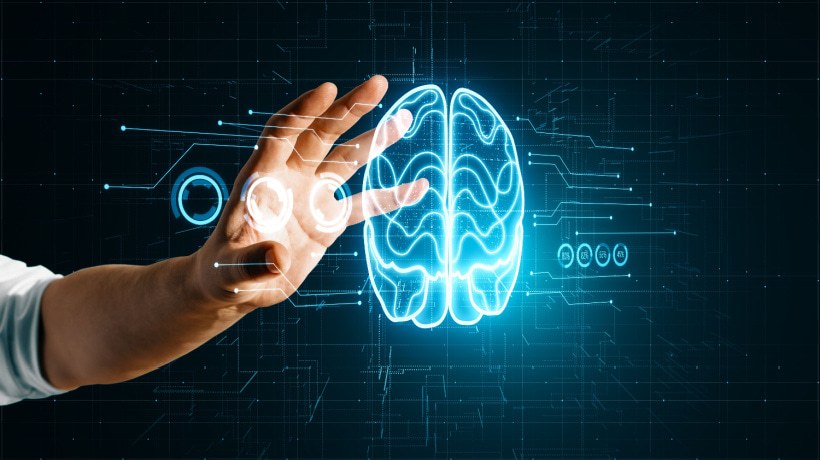AI And EdTech: A Crisis Of Coherence
Every time UNESCO sets a new priority, the challenge begins to keep up. With its recent focus on AI competencies, educators around the world are being encouraged to integrate Artificial Intelligence into their classrooms to match the pace of global transformation. Even in rural communities, AI tools are being added to daily routines and reshaping how students learn and interact with information. But something around the next corner—something few are anticipating—almost guarantees its failure. The time is now to get ahead of what's becoming an educational crisis of coherence. Without a coherent approach that connects neuroscience with EdTech and AI, we risk designing systems that optimize for short-term technological efficiency and long-term human problems.
The Greedy Algorithm
Computer science offers a useful parallel. A "greedy algorithm" makes the best immediate choice at each step without evaluating long-term outcomes. It produces quick, visible results but rarely achieves the optimal solution. In a large corporate setting, that might look like a product team fixing one interface without considering its effect on the broader system. In education, it's a familiar pattern: schools and software developers pursue short-term gains (faster grading, higher test scores, promises of personalization, better overall reports) while ignoring the deeper mechanisms that shape how individuals adapt and grow.
When technology, policy, and pedagogy move independently—each at its own pace—the results may appear efficient on the surface. Yet behind the dashboards and data, budgets are straining, educators are burning out, and students risk becoming numbers in an optimization loop. The promise of AI, left unchecked, begins to resemble the greedy algorithm: a system trained to reach the next checkpoint faster, without pausing to ask whether it's moving in the right direction for the learners it's meant to serve.
EdTech continues to generate new tools, but the systems designed to connect the "Tech" to the "Ed" rarely align. The forces shaping how students learn are increasingly governed by separate logics—policy goals set by organizations such as UNESCO and local governing bodies, product development cycles driven by industries far outside the classroom, and cognitive realities that, if we're being honest, are seldom present in any of those conversations.
A coherent framework depends on these forces intersecting in purposeful ways. Artificial Intelligence brings adaptive potential. Educational technology provides the tools that carry it into practice. Neuroscience grounds both in an understanding of how the brain learns, remembers, and adapts to change. Together, they form a triangulation that can guide the next phase of educational design—one where progress is measured through long-term outcomes in each leg of the stool.
AI: Adaptive, But Directionless
Artificial Intelligence is arguably the most adaptive tool in the educational ecosystem, yet its adaptability and usefulness are only as strong as the purpose guiding it. Tools such as ChatGPT's Study Mode can interpret patterns, adjust instruction, and generate feedback faster than any human system could manage alone. These functions make it a powerful ally for personalization and responsiveness. But efficiency alone doesn't justify the immense strain it places on the financial and human systems around it. Without clear alignment to long-term objectives, learning science, and human context, AI can easily reinforce surface-level reporting goals instead of cultivating deeper understanding and potential.
When used thoughtfully, AI serves as an interpreter of student behavior—translating data into insight. It can help identify disengagement, highlight cognitive overload, anticipate gaps or redundancies in lessons, and signal when pacing needs adjustment. Its value emerges from the patterns it reveals that inform—rather than bypass—human judgment. In a coherent framework, AI becomes an extension of the educator's capacity to anticipate, respond, adapt, and individualize learning.
The next challenge is ensuring that what AI observes aligns with what teachers and students experience. That alignment begins with the tools built around it—the educational technologies that deliver, structure, and measure its impact.
EdTech: Tools Without Pedagogy
Educational technology shapes how AI reaches the classroom. It translates innovation into the daily routines of teaching, grading, and communication. Yet as new platforms multiply, coherence often gives way to overload. Teachers manage multiple dashboards, data streams, and logins, each added to the algorithm greedily to solve a small piece of the puzzle while creating new layers of fragmentation. What was designed to streamline learning becomes another system to learn and maintain.
The issue is rarely the technology itself but the absence of pedagogical design that connects tools to learning outcomes. When EdTech is developed without understanding how the brain processes, stores, and retrieves information, the result is a moment of activity rather than learning for retention. Interfaces may track participation, but participation alone doesn't indicate engagement or mastery. A purposeful EdTech ecosystem must be built around cognitive and instructional principles that guide both pacing and feedback.
For technology to serve education effectively, it must operate as an instrument of pedagogy, not an alternative to it. Each tool should reinforce the conditions that make learning possible—attention, curiosity, emotion, memory, and reflection. That alignment depends on one more element: neuroscience, which grounds design and implementation in the realities of how individuals think and learn.
Neuroscience: The Anchor For How Learning Actually Happens
Neuroscience provides the foundation for understanding what makes learning possible. It explains how attention is sustained, how information moves from working memory into long-term storage, how emotion influences recall and motivation, and what creates barriers to learning. These are practical guideposts for designing instruction and structuring digital environments that support genuine comprehension.
When learning design aligns with cognitive function, students process information more effectively, retain it longer, and apply it with greater flexibility. Teachers see the difference in test scores, but also—and more importantly—in engagement and persistence. Neuroscience also clarifies the limits of capacity: cognitive overload, stress responses, and fatigue all interfere with learning, regardless of how advanced the technology appears.
AI, EdTech, And Neuroscience: A Coherent Educational Ecosystem
Integrating neuroscience with AI and EdTech creates a system that adapts to performance data as well as the mental and emotional states that shape performance itself. This alignment forms the basis of coherence—an educational ecosystem where all pieces of the integration follow the rhythms of the human brain, and ROI is measured through durable, transferable understanding. If an AI- and neuroscience-driven LMS can do all that, there's no need to sell anyone on the dashboard.









